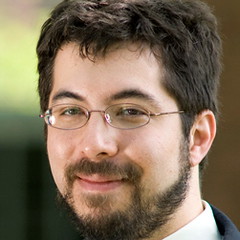
Ed Boyden
Assistant Professor, MIT Media Lab, MIT Brain and Cognitive Sciences, and MIT Biological Engineering
Controlling Brain Circuits with Light
The brain is three-dimensional and densely-wired with billions of heterogeneous computational primitives. Understanding how these elements work in real time to mediate behavior and consciousness, and how they are compromised in neural pathology, is a top priority. We have recently revealed methods for real-time optical activation and silencing of specific cell types in the brain, using naturally-occurring molecular sensitizers such as channelrhodopsin-2, halorhodopsin, and archaerhodopsin. Building off of these molecular tools, we also have created optical hardware and algorithms for systematically testing the contribution of brain regions, cell types, and circuit connections to behavioral functions. We are also working on noninvasive methods of information delivery to the brain. We discuss the application of these technologies to the analysis of neural dynamics, as well as to translation for new treatments for human disease, and eventually towards augmentation of the human condition.
Ed Boyden is the Benesse Career Development Professor at the MIT Media Lab, assistant professor of Biological Engineering and Brain and Cognitive Sciences at MIT, and leader of the Synthetic Neurobiology Group. His group aims to discover principles for controlling neural circuits in order to understand how cognition and emotion arise, and also to enable systematic repair of intractable brain disorders such as epilepsy, Parkinson's disease, post-traumatic stress disorder, and chronic pain. In order to accomplish this, his group invents new tools for controlling and observing the computations performed by brain circuits. He has launched an award-winning series of classes at MIT that teach principles of neuroengineering, starting with basic principles of how to control and observe neural functions, and culminating with launching companies in the nascent neurotechnology space. He was named to the "Top 35 Innovators Under the Age of 35" by Technology Review in 2006, his lab's work was selected to the Discovery Science Channel's "Top 5 Best Science Moments" in 2007, and he was selected for the "Top 20 Brains Under Age 40" by Discover Magazine in 2008, as well as awarded the NIH Director's New Innovator Award and the Society for Neuroscience Research Award for Innovation in Neuroscience. Ed received his PhD in neurosciences from Stanford University as a Hertz Fellow, where he discovered that the molecular mechanisms used to store a memory are determined by the content to be learned. Before, he received three degrees in electrical engineering and physics from MIT. He has contributed to over 200 papers, current or pending patents, and articles, has given over 80 invited talks, and writes a column for Technology Review magazine.
